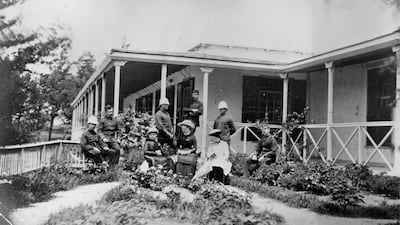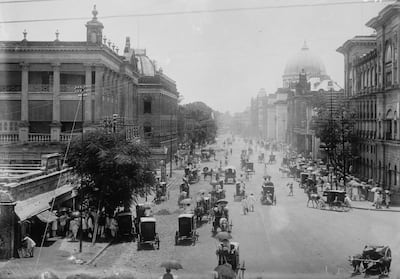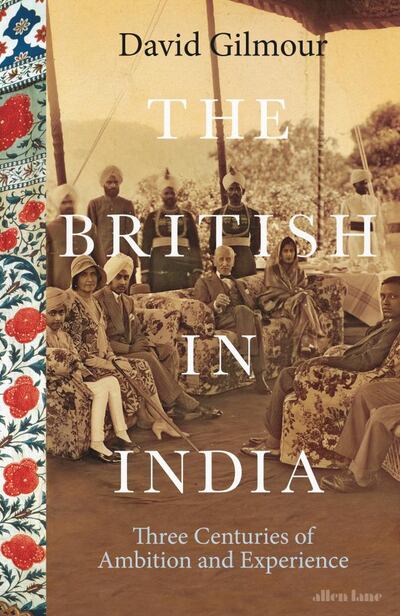"While we hold onto India, we are a first-rate power," wrote George Curzon, the last Victorian viceroy of India. "If we lose India, we will decline to a third-rate power."
A book that focuses on people rather than politics
In his new book, acclaimed historical writer David Gilmour – whose work includes a study of Victorian India and a biography of Curzon – traces the lives and the contributions of the many Britons who left their homeland for the Subcontinent while Britannia still ruled and the brightest jewel was in its crown.
The British in India: Three Centuries of Ambition and Experience covers a wealth of social history. Readers hoping for a political history of the Raj, with a central thesis, argument and judgments, should look elsewhere. In an introductory disclaimer, Gilmour explains that his book does not grapple with the politics or ethics of the British Empire. Instead he is interested in the motives and identities of British individuals in India: "in who these people were and why they went to India, in what they did and how they lived when they got there."
Gilmour devotes his first section to aspiration. Many who made the arduous or outright hazardous six-month passage to India in the 18th century were errant sons sent into exile by their fathers to mend their ways and earn their keep. Some enterprising sorts amassed a fortune working for the East India Company, others by establishing family firms.
But by 1830 those get-rich-quick opportunities dried up and the nabob died out: “the pagoda tree, when shaken, no longer showered its coins upon the adventurous and avaricious.” From then on, Britons saw India as a place to pursue a steady career and enjoy a higher standard of living than they would have obtained at home.
The army and the administration remained key employers. However, in the second half of the 19th century, as the British population in India expanded, further prospects opened up. Thousands of men were able to follow professions in commerce, industry and the railways, while women found positions as midwives, matrons, doctors and nurses.
In his second section, Gilmour focuses on working lives, both indoors and out. We meet district officers of varying competence and severity, and forest officers (or jungle wallahs), some of whom floundered in hill top stations or remote wildernesses. There are planters and policemen as well as military men and missionaries (the politician and orator William Wilberforce claimed that converting Indian subjects to Christianity – freeing them from “the grossest, the darkest and most degrading system of idolatrous superstition” – was more important than the abolition of the slave trade).
Taking us inside the lavish homes and beyond
Gilmour concludes by turning from work to play. In this, his longest and most absorbing section, he explores everything from intimacies to domesticities, by way of one of two singularities.
We are taken into several lavish British homes, many of them designed as reassuringly familiar as possible to minimise culture shock and achieve, as one woman termed it, “England in a perspiration”. We learn about those staple colonial pastimes of cricket and polo along with the less well-known pursuits of pig-sticking and jackal-hunting. And we are shown the ins and outs of “the Club” – what Gilmour calls “the social centre” of the civil station and cantonment – a refuge in which to unwind with croquet, tennis and leisurely drinks on the verandah. Although clubs seldom had Indian members until after the First World War, that did not mean Britons only mingled, or cohabited, with each other. Gilmour describes the rise and fall of the “bibi”, or native mistress, and provides insight into British-Indian marriages.
There is welcome comic relief not in tales of cultural divide but in stories concerning mismatched British couples. One intellectual woman who “didn’t know a golf ball from a tennis ball” married – and divorced – a sports-obsessed businessman who fell asleep during concerts and thought Omar Khayyam was a curry.
Gilmour shines a light on insufferably snobbish officers’ wives and the less conventional memsahib who ventured further afield than her club and her bungalow compound. One standout chapter looks at women like Fanny Parkes who in the 1830s declared her passion for “vagabondising over India.”
_____________________
Read more:
Review: Trump in the White House by Bob Woodward, Simon & Schuster
Gina Miller's 'Rise' is an attempt to rescue the Britain she built in her mind
Nihad Sirees’s new novel is a study in storytelling set in the golden age of Syria
_____________________
Clocking in at over 600 pages, The British in India is a brick of a book, thick with fact, detail and anecdote. By rights it should sag in places, buckling under the weight of its author's tireless research – only it doesn't. By prioritising the individual, Gilmour fascinates and entertains with one bite-sized case study or potted history after another. Because of his egalitarian approach, men and women from all levels of society are included, from aristocratic governors to lowly punkah wallahs.
Gilmour is aware that not all these people were able to “make history”. And yet, he says, “I believe they deserve at least to be recorded and to be given human proportions.” It is a noble sentiment, and his book is a masterful achievement.



